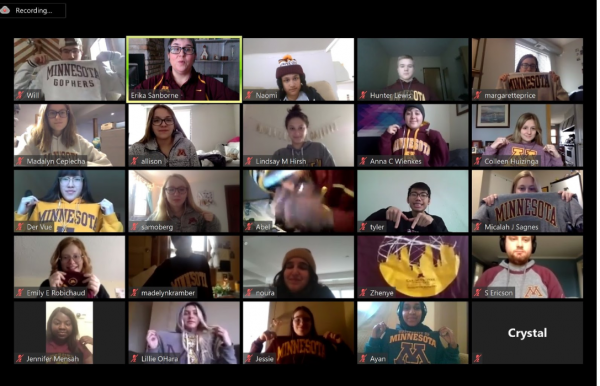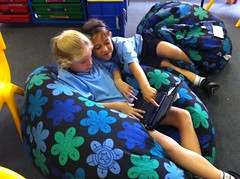
From Whence We Came
At some point, we realized that a classroom could be an interactive environment for learning, and that students should be more centered. We could still lay out our learning objectives and share from our content expertise, but the classroom itself would be their place to shine, not ours. Our time and efforts shifted from preparing our lectures to strategizing lesson plans that would engage students in working towards those learning outcomes. In a way, we were drawing the maps but they were driving the cars.

The importance of this student-centered approach to teaching became more apparent with research on trauma and trauma-informed classrooms. We realized that trauma affected students’ brains and their very DNA. We needed to not further traumatize students who were taking our classes, and we needed to remove racial violence from our curriculum, an essential consideration beyond the scope of this piece but hopefully something you are already mindful of.
For example, avoid teaching about race differences through a deficits-only model that makes students of color experience trauma so that white students can experience learning. One common case of this in the classroom is the so-called “privilege walk” exercise, which typically leaves students physically sorted, with those who have darker complexion literally at the back of the room when you are done. That exercise is likely traumatic to Black students and other students of color, who already know they will end up in the back, and do not appreciate their bodies being used to model that disadvantage yet again so that white students can learn something that day which they have lived their whole lives. There are other class exercises, beyond the scope of this article, that should be revised and reviewed. The bottom line on this? We must remove racial violence from the curriculum and minimize the extent to which we further traumatize our students.
Trauma-informed teaching places relationships at the center of our job as educators. There are several frameworks and sets of principles on how to do this.
- Perry, Bruce D. 2009. “Examining Child Maltreatment Through a Neurodevelopmental Lens: Clinical Applications of the Neurosequential Model of Therapeutics.” Journal of Loss and Trauma 12:240–255.
- Walkley, Meg and Cox, Tory L. 2013. “Building Trauma-Informed Schools and Communities.” Children & Schools 35(2):123–126.
- Australian Childhood Foundation. 2010. “Making SPACE for Learning: Trauma Informed Practice in Schools.”
The Multiplying Connections Model (Perry 2009; Walkley and Cox 2013) says that school has five tasks: stay “Calm,” be “Attuned” and “Present” while remaining “Predictable” as possible in an otherwise unpredictable world, and basically “Don’t let students’ emotions determine your own. Their acronym is CAPPD.
The Australian Childhood Foundation’s model (2010) has SPACE as an acronym, which summarizes their take on the five basic principles of trauma-informed classrooms. Their approach includes a lot of practical suggestions, such as, “Provide impromptu fun experiences which are not defined as a reward” because playfulness is a resource for students experiencing trauma.
The popular “Compassionate Teaching” model (Wolpow et al. 2009) offers thorough overviews on building trauma-informed learning environments.
Researchers at Boston University (Atallah et al 2019) have published findings that support the benefits of trauma-informed learning environments, welcoming and inclusive classroom environments, in which educators attend to students’ social and emotional needs, led to improved academic outcomes.
- Atallah, Devin, Koslouski, Jessica, Perkins, Kesha N., Marsico, Christine, and Porche, Michelle. 2019. “An Evaluation of the Trauma and Learning Policy Initiative’s (TLPI) Inquiry‐Based Process: Year Three.” BU Wheelock College of Education & Human Development.
Where We Are Now
And now here we are in the present, and our classrooms have a decidedly uncertain future. Some faculty are going with face-to-face (F2F) instruction. Some are teaching synchronously online or asynchronously-only; others are trying to offer or a bit of each. Some educators are teaching “HyFlex” which means they are going to be doing every single option simultaneously.
And through whatever medium one is teaching, something essential might be lost. We are planning, and getting training on how to lecture in this time. In doing this we risk reverting to that era in which we would talk and they would write down what we say.
Take a step back outside of the classroom and scan the globe for a moment. Perhaps now more than ever, we recognize the presence of racial trauma, poverty trauma, and natural disaster (pandemic) trauma. Now, as much as ever, our classrooms must be trauma-informed spaces that are student-centered.
We do not need to reinvent this wheel. We just need to remember that it’s a really important wheel, and keep it in the forefront of our planning. Since we all have been traumatized to some extent by recent events, acknowledging that burdens are not equally shared in our society, our hearts should naturally go in this direction anyway, towards creating trauma-informed classrooms, wherever and whatever those classrooms may look like.
How to be trauma-informed
It is not a quick and easy thing to be trauma-informed. Trauma is an experience, which means that it is a response to a situation or event, not the situation or event itself. Not all students experience an event or situation the same, because students have different resources and baseline stressors to begin with, and therefore trauma differs among them. Having a trauma-informed classroom is thus about listening and centering the actual students you have in your classroom. It is about communication, trust, and relationships, which means you will have to build and maintain this as you go.
Here are some broad, trauma-informed teaching strategies that should work across disciplines, drawn in part from the following references.
- Carello, Janice and Butler, Lisa D. 2014. “Potentially Perilous Pedagogies: Teaching Trauma is Not the Same as Trauma-Informed Teaching.” Journal of Trauma & Dissociation 15(2):153–168.
- Downey, Laurel. 2013. “Calmer Classrooms: A Guide to Working With Traumatised Children.” Melbourne, Victoria, Australia: State of Victoria, Child Safety Commissioner, & Queensland, Australia: State of Queensland, Department of Education, Training and Employment.
- Wolpow, Ray, Johnson, Mona M., Hertel, Ron, and Kincaid, Susan O. 2009. “The Heart of Learning and Teaching: Compassion, Resiliency, and Academic Success.” Olympia: Washington State Office of Superintendent of Public Instruction (OSPI) Compassionate Schools.
Strategy #1: Empower your students
Empowerment is an ongoing process through which those who do not have an equal allocation of resources gain increasing access to resources. In the classroom, you can offer choices to students about how they will participate and meet learning objectives. By handing over some controls, you can help students feel like not everything in their life is out of their control. This can be very motivating for students, helping them beyond your class.
Strategy #2: Check in with students
Make it a ground rule in your classroom that students’ emotional safety is important to you. And it should be, because it is necessary for learning. Pay attention to your students so that you will notice when something is different, and then reach out. You cannot know what is going on in any student’s mind or life, but you know what you observe, and so that is what you share. For example, you might say, “I noticed that you were late this week, and you are not usually late.” If that does not lead to an explanation, follow it with, “How are you?” This lets your students know that they are not invisible and that they matter, which can help them beyond your class.
Strategy #3: Avoid idealizing trauma in your content
Avoid idealizing trauma narratives in subject content. Make sure your lecture content does not romanticize trauma. What this does is that it skips the healing process, showing only the end points of the tragic event and the triumphant survivorship. This can serve to inhibit coping and healing for students, who need more freedom to express real lived experiences and pain, as appropriate and if it is related to your course content.
Strategy #4: Identify social supports
Make sure you are aware of institutional peer supports and mentor supports available to your students, and how to connect students to these resources. If possible, be a conduit of mentoring connections yourself. I keep in touch with former students for the sole purpose of connecting them with current students, a practice I highly recommend. Few things are as useful to a current student struggling as an outreach from a former student, now ten years out and living the dream the current student hopes to reach. I find that former students welcome the chance to support current students in this way, even during a pandemic. If you have never done this before, you could begin by reaching out to a few former students now and asking if they would be willing to communicate with a current student who has similar career aspirations. In my experience, I have never had one decline this invitation, and it can be a form of meaningful social support for your current students in need, a connection that, after you make it, does not involve you.






